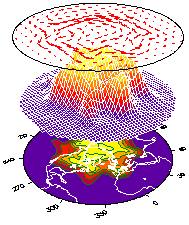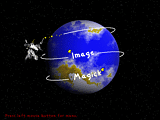-
Marco Colombini
... well, after all I think I can put myself on top of the thanks
list ... this work has been done in my spare time :-(
-
Marco Galiani who has been, as always, willing to help solving all
(well, almost all) the technical problems.
- Tilman
Buntz, who is a maths and physics student at the University of
Munchen and is writing a thesis which shall become a guided tour on the
principles of flight for the Deutsches Museum of Munchen for students.
Tilman will use some material from these webpages for his thesis and
proposed himself for arranging the german version of this lecture ... so
choosing to receive all the honours and the blames about it.
- Rita
Wodzinski, who teaches physics at the University of Munchen and is
the supervisor of Tilman. Her curiosity on the problem ``longer path =>
higher velocity'' stimulated an interesting discussion. The sections
devoted to the streaklines pattern are the ultimate result of this
discussion and I hope they will help to clarify this common
misconception.
- John
S. Denker, who wrote some very enojable pages on the principles of
aerodynamics. John has been very helpful in the building of the code
needed for the streakline animations. A particular thank for his
willingness and for his suggestions.
-
Jay M. Khodadadi, who teaches Fluid Mechanics at Auburn University
and, with the help of Mr. Nitesh Nimkar, did a very good job in checking
the english version of the site. His work went well beyond a mere spell
check so that I really would like to thank him for his
willingness. After all he was the only one of many volunteers who
actually completed the job. Anyway, I take this chance to thank also all
the people who spent some time on this tedious work.
- The students of the course of Fluid Mechanics for Chemical
Engineers, who were the actual reason I started this project. In the
last few years I have mercilessly forced them to carefully study these
pages, asking them to correct, at least, the typos in the italian
version. No hope. (Well, well, actually they found two in the english
version ... hope is the last to die).
- A note to the german version, written by Tilman (I don't
understand a word in german, but I've seen my name in it so ...)
Vorwort zur deutschen Übersetzung:
Hiermit danke ich
nochmal ganz herzlich Marco Colombini für die großzügige
Bereitstellung seiner Seiten und Rita Wodzinski, die viel Zeit für
die Überarbeitung der Übersetzung geopfert hat.
|










